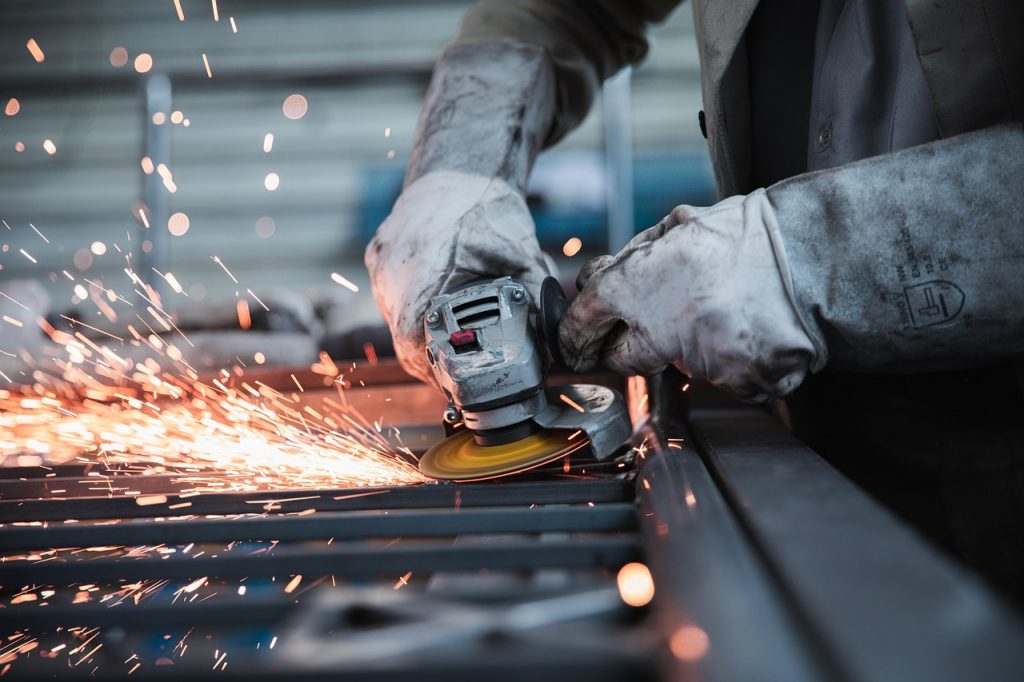Why the UK Steel Sector Expects Less Impact from the Second Coronavirus Lockdown
Why the UK Steel Sector Expects Less Impact from the Second Coronavirus Lockdown

According to market reports, the steel industry in the United Kingdom (UK) is projected to perform marginally better despite the second England lockdown scheduled to commence 5th November. This growth projection has been arrived at despite the rapid increase of COVID-19 infections in the country.
Effects of Lockdown
Steel manufacturers in the country will continue to work to meet the demand for steel from the construction and manufacturing sectors, which are also expected to remain active. However, as per S&P Global Platts, the shutting down of car showrooms will reduce production output in the automotive industry, as was the case in the initial lockdown.
“We do not expect to see a big change in the sales volumes of steel because the production industry has not been closed down,” this is according to a spokesman for Tata Steel in Europe. Tata Steel owns the main Port Talbot steelworks located in Wales. “We had been already observing the necessary health and safety protocols, so the recent changes do not impact directly on our operations,” he said.
The newly-introduced lockdown measures were solely for England; Wales has already began a fourteen-day lockdown that was to lapse on 9th November. Currently, Northern Ireland is under a month-long lockdown that is to end on 13th November, while Scotland recently announced a 5-tier COVID-19 Alert level system on Nov. 2.
As per Gareth Stace, the Director-General, UK Steel, the UK Steel Sector Association, the UK steel companies will continue in operation all through the second lockdown while strictly abiding by COVID-19 workplace protocols.
Stace further reiterated the industry’s total commitment to support all Government programs to curb the existing scourge in public health. “We are ready to play a part in provision of skilled labour, adjusting our production lines or prioritizing the sourcing of specialist materials,” Stace said.
Stace was also quick to highlight the steel industry’s adherence to safety guidelines during the first lockdown, where the health of more than 30,000 workers was guarded. The steel industry is a critical economic player, with an annual production capacity of 7.3 million metric tons which approximately meets about 65% of UK’s annual demand for steel.
With the second lockdown expected to be a month long, a recent publication by the Financial Times indicates that consumers are likely to delay their spending plans rather than cancelling them altogether. In contrast, the first lockdown lasted for almost three months, from late March to mid-June, and brought a different set of implications on consumer spending habits.
This bullish economic outlook was also shared by other professionals like Pierre Veyret, a technical analyst at ActivTrades brokerage firm based in London. Veyret, who presented this discussion in a Nov. 3 bulletin, attributed the recovery seen in the European equity markets during the week to investors’ anticipation of an end to the US Presidential election.
Additionally, Veyret held that the equity market’s rebound could be an indication that investors’ focus was shifting from the latest lockdowns measures in Europe, towards the end of the crisis as witnessed in March. In his words, Veyret says the equity sell-off in the previous week significantly improved share prices, and would attract investors who have already began exploring and valuing economic recovery opportunities.
Nonetheless, on November 2nd, the National Institute of Economic and Social Research lowered its Q4 projections for the UK’s economic growth rate, providing a 10.5% reduction in the GDP for the year. According to the institution, a full economic recovery to the Q4 2019 levels can only be expected in 2023 due to the effect of COVID-19 on the economy, and the possibility of no-deal Brexit on the cards.
End of Brexit Transition
Despite available market data painting a rather optimistic outlook, the UK steel sector is a bit anxious from the 22% sharp drop in the domestic demand for steel that was reported in the sector in the first half of 2020. This fall in demand for steel in 2020 was directly attributed to the impact of the coronavirus pandemic.
The UK Steel director-general said the sector was worried that the minimal economic recovery in June would be significantly reversed by the new lockdown. The sector’s director-general called on the Government to provide economic stimulus packages to intensify consumer demand now and in 2021, and help business move forward from the hard market conditions of 2020.
Worthy to note, apart from the current health pandemic, market players in UK’s steel sector are keeping close tabs on 31 December when Britain plans to leave the European Union, which further adds uncertainty to the economic recovery plan. Construction materials like mobile aluminium scaffold will play a major part in this.
